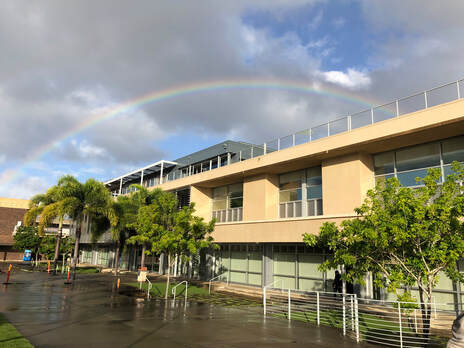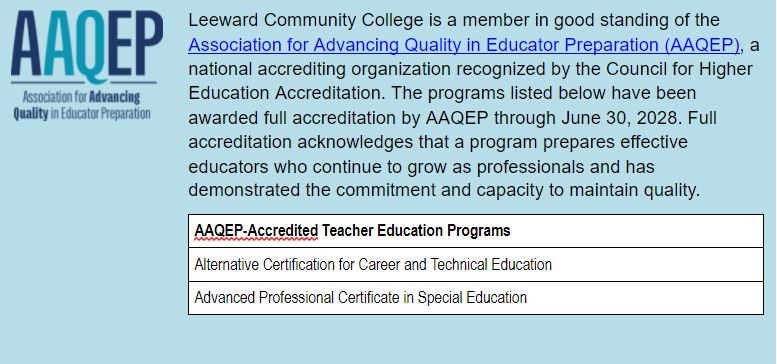Our History

The Teacher Education Program (TEP) initially began in fall 2006 as a response to the state’s need to address the No Child Left Behind federal mandate for highly qualified paraeducators and as a result developed the Associate in Science in Teaching (AST) degree (formerly known as the AA in Teaching degree - AAT). The AST degree is a nationally recognized two-year terminal AA degree with a focus on teaching that consists of 19 teacher education credits and 43 credits of general education courses and is delivered statewide via face-to-face or online courses. The AST degree provides a career ladder for highly qualified para-educators or serves as a transfer degree to four-year institutions for pre-service teachers.
Over the next five years, the Teacher Education Program’s AST enrollment increased from 21 students in fall 2006 to over 400 students in fall 2010 and soon became one of the largest programs in the community college system. The Teacher Education Program’s success positioned it with the flexibility, resources, partnerships, and expertise to respond to a request by the UH Community College system and the Hawai’i Teacher Standards Board (HTSB) to develop an alternative pathway to licensure for Career and Technical Education (CTE) teachers because 4-year programs were no longer offering CTE licensure alternative pathways. The CTE licensure program, approved in 2012, is designed to provide access state-wide via online instruction, to ensure that any CTE program in Hawai’i could be maintained with qualified CTE teachers. In fall 2015, the Council for the Accreditation for Educator Preparation (CAEP) granted the CTE program accreditation for 5 years and since its inception the program has licensed 114 CTE teachers where 104 are currently working as CTE teachers in Hawai’i’s public schools.
The success of the CTE program led to another request by the state in fall 2015 for the Teacher Education Program to develop an alternative licensure pathway for special education teachers, which had become the state’s most critical need, especially in underserved areas. Using the CTE program as a model, the SPED program was developed to be offered state-wide via distance education, and enrolled its first candidates in fall 2017. To date, the SPED program has licensed 55 special education teachers where 41 are currently working as SPED teachers in Hawai’i’s public school.
Over the next five years, the Teacher Education Program’s AST enrollment increased from 21 students in fall 2006 to over 400 students in fall 2010 and soon became one of the largest programs in the community college system. The Teacher Education Program’s success positioned it with the flexibility, resources, partnerships, and expertise to respond to a request by the UH Community College system and the Hawai’i Teacher Standards Board (HTSB) to develop an alternative pathway to licensure for Career and Technical Education (CTE) teachers because 4-year programs were no longer offering CTE licensure alternative pathways. The CTE licensure program, approved in 2012, is designed to provide access state-wide via online instruction, to ensure that any CTE program in Hawai’i could be maintained with qualified CTE teachers. In fall 2015, the Council for the Accreditation for Educator Preparation (CAEP) granted the CTE program accreditation for 5 years and since its inception the program has licensed 114 CTE teachers where 104 are currently working as CTE teachers in Hawai’i’s public schools.
The success of the CTE program led to another request by the state in fall 2015 for the Teacher Education Program to develop an alternative licensure pathway for special education teachers, which had become the state’s most critical need, especially in underserved areas. Using the CTE program as a model, the SPED program was developed to be offered state-wide via distance education, and enrolled its first candidates in fall 2017. To date, the SPED program has licensed 55 special education teachers where 41 are currently working as SPED teachers in Hawai’i’s public school.

